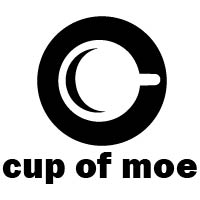We may earn money or products from the companies mentioned in this post.
1978 film “The Manitou,” adapted from Graham Masterton’s 1976 novel of the same name, stars Tony Curtis, Susan Strasberg, and Michael Ansara. Following the legend of a Native American Manitou spirit, “The Manitou” is ripe with an air of mystery, excellent effects, and a refreshing campiness.
Karen Erskine (Susan Strasberg) experiences a strange growth on her neck. The tumor flummoxes top doctors in the field, including Dr. Jack Hughes (Jon Cedar) and Dr. McEvoy (Paul Mantee). Hughes concludes that the tumor must be a living creature, as it exhibits similar characteristics to a fetus developing. Friend and romantic interest Harry Erskine (Tony Curtis) takes it upon himself to investigate, aided by Native American medicine man John Singing Rock (Michael Ansara). As Erskine, with the considerable help of Singing Rock, discovers, Native American shaman Misquamacus (Joe Gieb) is reincarnating in Karen’s tumor.
The plot of “The Manitou” is delightfully ridiculous. As such, it’s pleasantly campy. Harry works as a phony fortune teller, taking advantage of an elderly clientele. It’s fantastically enjoyable how quickly Erskine, and moreover the camp of doctors, accept that the tumor is Karen’s neck is, in fact, a product of black magic. Yet even once Dr. Hughes et. al surmise that it’s shamanic forces at work, the doctors remain inconsistently skeptical. One moment, Hughes believes that it’s Misquamacaus, the next he insists there’s a scientific explanation. But it’s campy enough to forgive such oddities.

Memorable scenes abound. Among the highlights, there’s a surgery gone wrong where Misquamacus, still in tumor-fetus form, wards off a laser surgery. The sheer pandemonium in the operating room is hilarious. Burgess Meredith appeared in the tragically underappreciated gem “Magic,” puts in a scene-stealing performance as an eccentric anthropologist, Dr. Snow.
In uniting technology and shamanic powers, “The Manitou” takes a different approach than most supernatural thrillers. Whereas science and magic typically appear at odds, “The Manitou” justifies the two, and in the epic climax, the hospital machinery plays a crucial role in fighting Misquamacus. Unfortunately, this somewhat detracts from the magical portions. The hulking state of the art machine in Hughes’ office feels like a bit of a Chekov’s Gun as it sits unused throughout most of the film, only to become useful in the third act.
But with its campiness, genuine entertainment value, and superb special effects, “The Manitou” is a wonderful supernatural thriller. Through combining technology and magic, “The Manitou” manages to differentiate itself from the slew of similarly-themed 70s horror flicks, ultimately offering a fresh narrative.
This post may contain affiliate links. We are a participant in affiliate programs such as the Amazon Services LLC Associates Program, an affiliate advertising program designed to provide a means for us to earn fees by linking to Amazon.com and affiliated sites. However, all products are thoroughly tested and reviews are honest and unbiased.
